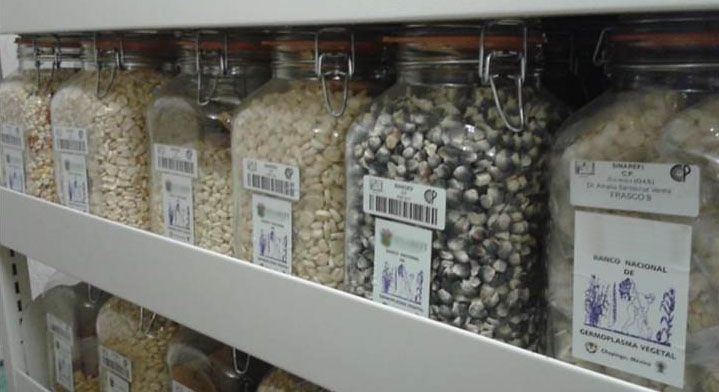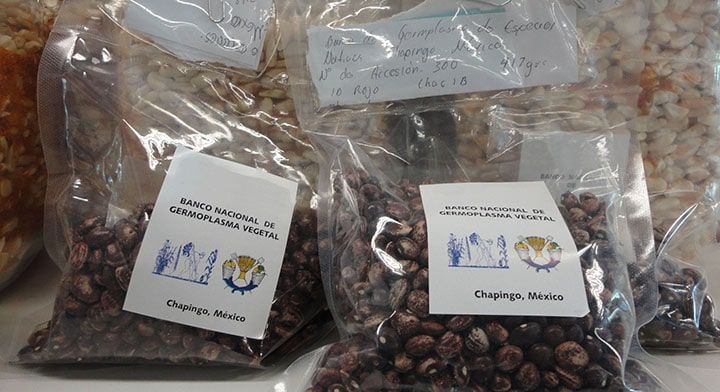Germplasm Banks: A Strategy for Future Food Security
Genetic resources are conserved because the risk of losing them is permanent, especially due to human action. Using different methods, samples are stored indefinitely so that they are available to future generations.

According to the Food and Agriculture Organization of the United Nations (FAO), food security is a universal human right; however, the increase in world population, the effects of climate change, and deficient production systems have led to an increase in food insecurity.
Germplasm banks were created as a strategy to face the increasingly near future where food shortages are recurrent, as well as the development of sustainable, efficient, and competitive production systems. Learn more about the role of genebanks.
What are germplasm banks?
Germplasm banks are repositories where seeds, tissues, or any other part of plants or animals are stored, to preserve the genetic biodiversity available. It has two purposes, one is to be able to do research on genetic improvement and at the same time to have a reserve of seeds at our disposal to face the effects of climate change.
Globally, there are millions of repositories that safeguard varied collections of a small part of the planet's biodiversity. The most recognized is the Svalbard Global Seed Vault, located in Norway; inside its security chambers are stored seeds of thousands of crop plants from all over the world.
Its objective is to preserve all the seeds of the planet, so that in case of the disappearance of a species as a result of a natural catastrophe or war conflict, a replica of the plant can be made. An example of this happened in 2015, during the war in Syria when the International Center for Agricultural Research in Drylands in Aleppo was the first organization to recover seeds from the vault.
Mexico has a great diversity of germplasm banks, including the collections of the International Maize and Wheat Improvement Center (CIMMYT), with more than 28 thousand maize and 150 thousand wheat seed collections; the National Plant Germplasm Bank (Bangev), whose database contains 8,337 specimens; the National Center for Genetic Resources (CNRG) of the National Institute of Forestry, Agriculture and Livestock Research (INIFAP), with a storage capacity of 800,000 accessions of different crops.
In addition, some higher education institutions such as the Universidad Autónoma de Nuevo León (UANL), the Iztacala School of Higher Education of the National Autonomous University of Mexico (UNAM), the Autonomous University of Queretaro, and the Autonomous University of Chapingo have germplasm banks to preserve genetic material or improve seeds without losing their original or native genetic code.

How are seeds preserved in genebanks?
The preservation of seeds, tissues, or plant or animal genetic material requires refrigeration rooms designed, built, and operated by specialists in the development of cold technology.
The method consists of controlling temperature, humidity, and lighting, this form of conservation is known as "ex-situ" or outside the natural environment of the species, it is sought that the seeds can withstand a humidity between 3 and 7 percent, as well as a temperature between -18 to -25 °C; while the preferred type of storage is usually the seed storage due to its practicality and low cost.
For the design of germplasm banks, simulation techniques are used to simulate thermal loads, moisture loads, and profiles of energy and drying demands throughout a typical day, taking into account climatic variations during a year.
In turn, bioclimatic methodologies are combined with air conditioning designs, dehumidification, and refrigeration through a cooling system with a compressor to maintain the required temperature with maximum efficiency and performance.
When they are removed from these germplasm banks, the seeds must continue to be viable, that is, they must continue to germinate until they reach the final product, and this viability can last up to 50 years, the greatest challenge faced by engineers in cold engineering technology, specialized in this field.
The conservation of seeds at low temperatures must allow obtaining a product in the best conditions as if they had never been refrigerated, therefore the quality of the seeds and their genetic, physical, sanitary, and physiological attributes must be evaluated so that they are not affected by the process. The operation of germplasm banks is based on the following:
- Maintain at the disposal of geneticists and breeders of different crops, the necessary genes to increase yield, disease resistance, tolerance to abiotic stresses (cold, heat, or drought), nutritional quality, etc., in domesticated and cultivated species of productive interest.
- Contribute to the preservation of the genetic diversity of native and naturalized species (mainly for forage use) in our country, whose populations may be considered at risk due to the impact of agricultural intensification and climate change.
Currently, there has been considerable progress in the technology used, improving the efficiency and performance of refrigeration equipment, by making use of simulation software for thermal loads, humidity, and energy profiles. It is a technology that not only affects us in the present but can improve lifestyle or food conditions for future generations.




